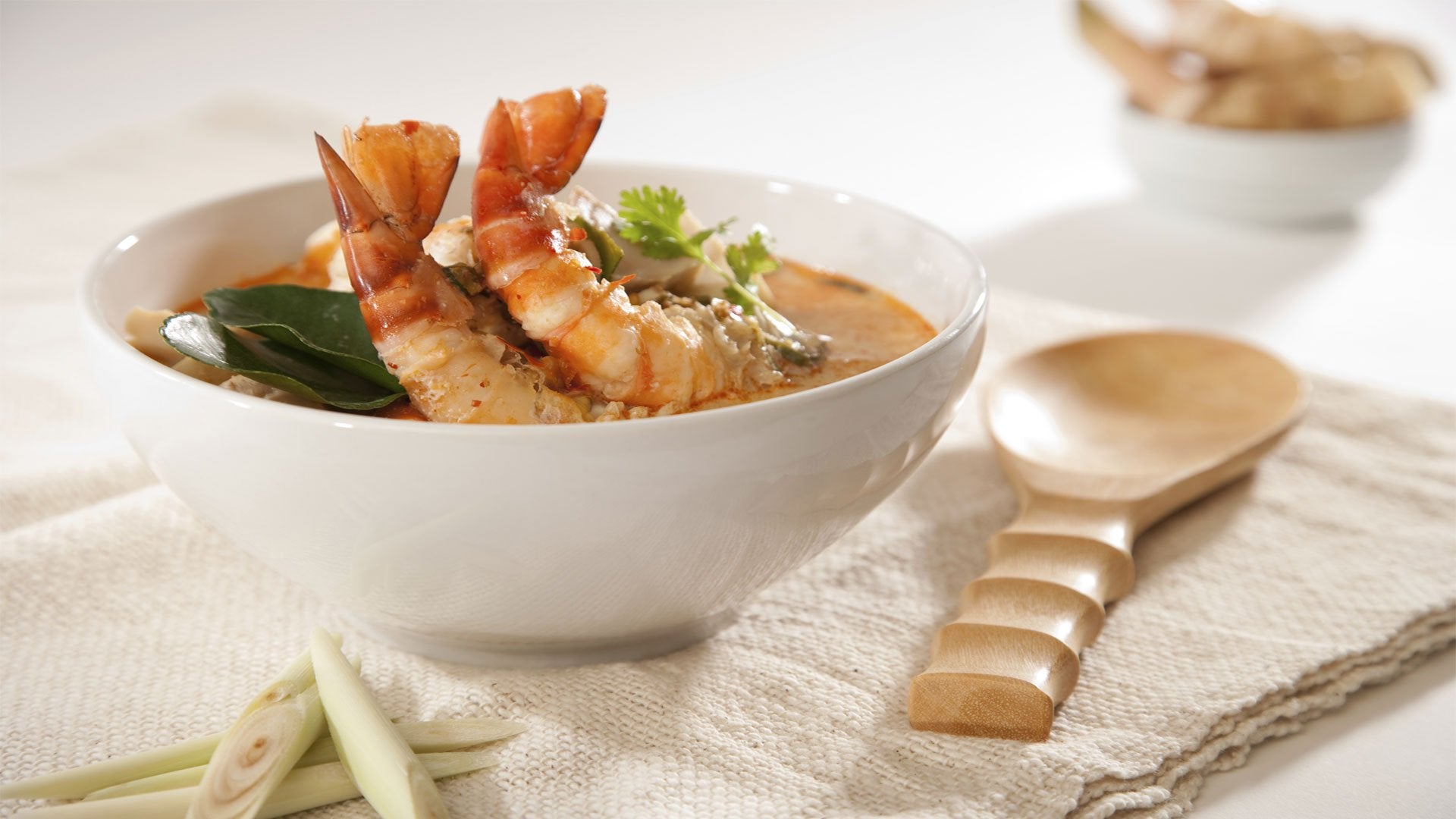The well known spice, flavour and aroma of Thai cuisine is not just a delicious coincidence. Herbs and spices are essential for Thai cooking and there are a few specific ingredients that are a must to achieve the perfect balance required for the various sweet, salty, sour and of course, spicy flavours in different recipes. In this blog, we’re sharing 5 essential Thai herbs and spices that any aspiring Thai cooking connoisseur should have at their disposal to achieve the classic and vibrant flavours of Thailand.
Thai cuisine is notorious for being spicy and so it’s no surprise that Thai bird's eye chillies are at the top of this list of essential Thai herbs and spices. While these chillies pack a lot of heat, they’re actually not the hottest Thai chillies (we mention one of the hottest Thai chillies further into this blog). However, what makes these so great is the fact they are so widely available. In fact, you have probably used Thai bird's eye chillies to cook something else without realising.
Both red and green bird’s eye chillies can be used to prepare Thai curry pastes, stir fried or sautéed into recipes and mixed into marinades and cooking sauces. They can also be used in uncooked recipes such as dipping sauces, salads or to garnish meals when serving. Some recipes which use Thai bird’s eye chillies include Tom Kha Soup and Khao Kluk Kapi (Thai fried rice with Kapi).
While both originate in Southeast Asia, have very similar appearances and even come from the same family of plants, galanal is not to be confused with or used interchangeably with the herb ginger. While ginger is renowned for its many health benefits and kick of flavour, galangal is also a powerful herb in its own right.
Galangal also has its own medicinal benefits and has been used in Thai cuisine for thousands of years to enhance the flavour of recipes. In terms of flavour, galagal is actually considered to be much stronger than ginger. It is warm and sweet but also rather pungent and well pronounced in recipes (a little goes a long way).
You can add thinly sliced pieces of galangal into stir fries, curries and soups like Tom Yum Goong. Galangal can be used to flavour seafood recipes and you use it to season your chicken when preparing Gai Satae.
Lemongrass is another widely known Southeast Asian herb used in western cuisine and cooking. In the west, lemongrass is mostly used to bring the classic and refreshing zesty herb fragrance to recipes and this is not different in Thai cooking.
Thai cuisine typically benefits from using the stalk of lemongrass plants to mildly flavour cooking. This is done by peeling away the outer layers of the herb, then slightly crushing the stalk to release the essential oils which add flavour and fragrance. The lemongrass is then cooked over a medium high heat with minimal oil and sometimes a combination of a few other herb and spice ingredients to release flavours into the oil, after this lemongrass is typically removed from the pan or wok and cooking continues with the residual flavours left behind. It can also be pounded into a powder form which makes it suitable for use in Thai recipes such as soups, salads and curries without removing from the pan or wok.
Earlier we mentioned that Thai bird’s eye chillies are the most widely available, making them a great essential spice to include in your Thai cooking ingredients shelf. However, if you can get your hands on Thai small red chillies (tip: we stock them here at Thai Food Online), you can achieve the truly authentic heat of Thai cuisine. Thai small red chillies are one of the hottest Thai chillies available and the usual reason for the heat behind classic Thai curry curries and other traditional recipes.
Not sure what heat/spices level you can tolerate when it comes to Thai chillies? We recommend that you read through our Thai chillies scoville scale to see which chillies best suit your palette. The general rule of thumb to follow with chillies to help you remember what is the spiciest is “the smaller the chilli, the higher the heat”. Much like the bird’s eye chillies, Thai small red chillies can be used in either cooked or raw form. When cooked, they may be added to curry, soups, stir fries and when raw, they are used to garnish fish dishes or in dipping sauces.
In the west almost everyone has heard of coriander. It’s thrown into so many recipes and dishes and is considered one of the most staple herbs to have to hand in the kitchen, whether fresh, home grown or dried. However, when it comes to Thai cuisine, coriander root, the stem that’s usually missing when you buy your coriander, is actually the staple part of the herb used in cooking.
Coriander root adds a certain aromatic and peppery taste in Thai cooking, which is much different to coriander leaves. It has a slightly tough and chewy texture and so it’s not uncommon for Thai cooks to pound this herb down into a paste or powder using a pestle and mortar. Also because of its texture, coriander root is best suited to Thai recipes with longer and more gradual cooking times such as curries, soups, broths and stocks. If you want to add the coriander root flavour to Thai recipes which take less time, buying non-fresh alternatives such as powder coriander root is a great option.









Leave a comment